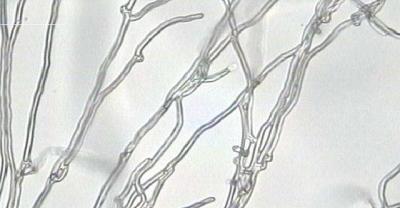Environmental conditions for the growth of edible fungi
Environmental conditions of edible fungi
The growth and development of edible fungi is controlled by internal and external factors. The internal factors are caused by the genetic law of edible fungi themselves.
What determines is the result of the evolution of nature. External factors include temperature, humidity, moisture, air, light and pH value.
Wait. Only by mastering the internal and external factors needed for the growth and development of edible fungi, can we artificially create suitable conditions.
In order to achieve the success of edible fungus production. This paper mainly introduces the external environmental conditions for the growth and development of edible fungi.
I. temperature
The essence of the effect of humidity on the development of edible fungi is that temperature determines the activity of enzymes, thus affecting the metabolism of edible fungi.
(1) the filamentous stage
Edible fungus mycelium, generally speaking, is relatively resistant to low temperature, which only has an inhibitory effect on the total. No harm. Truthfully
In the laboratory, the bacteria are often preserved at the temperature of 4 ℃. This kind of special piece is used. On the other hand, high temperature can damage the mycelium.
Damage often leads to mycelium wilting and death. For example, in cultivation, especially in out-of-season cultivation, "burning bacteria" often occurs.
The phenomenon is the damage caused by high temperature.
For the type of low temperature, such as Flammulina velutipes, Flammulina velutipes, etc., the suitable temperature for mycelium growth is 18 ℃-20 ℃. Medium temperature type
Such as Lentinus edodes at 22 ℃ 28 ℃, high temperature types such as volvariella volvacea at 28 Mel 32 min.
(2) the stage of fruiting body differentiation
Generally speaking, the temperature required in the fruiting body differentiation stage is lower than that in the mycelium stage. Such as Flammulina velutipes, more mycelial stage
The temperature of Agaricus bisporus decreased by 8 ℃ 12 ℃: the fruiting body could differentiate, and the temperature of Agaricus bisporus decreased by 8 Mel 14 min.
It belongs to medium temperature differentiation type, and volvariella volvacea hardly needs cooling from vegetative growth to reproductive growth, so it belongs to high temperature differentiation type.
On the other hand, some kinds of edible fungi, such as Pleurotus ostreatus and Lentinus edodes, can not separate the fruiting body at a constant temperature after cooling.
Melt out. There must be a larger day only the temperature difference stimulation, the greater the temperature difference, the better, generally 8 murals 10 ℃, called
For variable temperature fruiting; the primordia of black fungus, Tremella fuciformis and volvariella volvacea can differentiate without diurnal temperature difference stimulation, which is called constant.
Warm and solid.
(3) the developmental stage of fruiting body
The temperature in the fruiting body development stage was lower than that in the mycelium stage and higher than that in the fruiting body differentiation stage. In a certain temperature range
Inside, the small body grows fast in the high temperature environment, but the stalk is long, the umbrella is easy to open, the meat is thin, and the commodity value is low, while in the low temperature ring.
In the environment, the fruiting body grows slowly, but the meat is thick, the flower is big, and the commercial character is good. For example, Lentinus edodes under the condition of low temperature, dry and wet alternately
Pleurotus ostreatus is easy to form, and the commercial value is extremely high; it grows big at low temperature, the meat is thick and the quality is very good.
- Prev

Mushrooms spread out from bagasse: what kind of edible fungi can sugarcane cultivate? Application of bagasse in Edible Fungi
In Chengmai, Hainan, there is an enterprise that has planted edible fungi with sugar cane! "this is a pocket mushroom, taste crisp, known as the best mushroom," the enterprise is responsible for.
- Next

Non-pathogenic diseases of edible fungi
Second, unsuitable living conditions and improper cultivation and management measures or genetic variation of non-pathogenic diseases will cause obstacles to the growth and development and physiological obstacles of edible fungi.
Related
- Fuxing push coffee new agricultural production and marketing class: lack of small-scale processing plants
- Jujube rice field leisure farm deep ploughing Yilan for five years to create a space for organic food and play
- Nongyu Farm-A trial of organic papaya for brave women with advanced technology
- Four points for attention in the prevention and control of diseases and insect pests of edible fungi
- How to add nutrient solution to Edible Fungi
- Is there any good way to control edible fungus mites?
- Open Inoculation Technology of Edible Fungi
- Is there any clever way to use fertilizer for edible fungus in winter?
- What agents are used to kill the pathogens of edible fungi in the mushroom shed?
- Rapid drying of Edible Fungi

